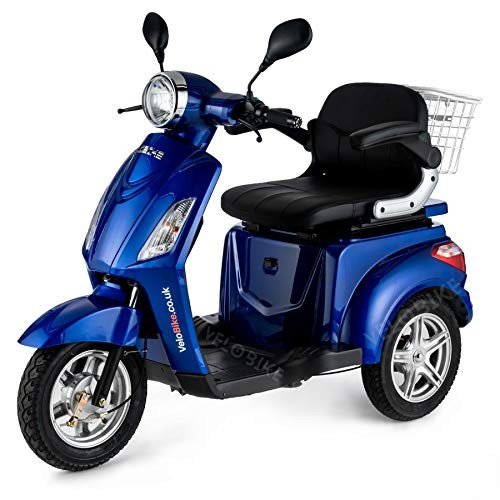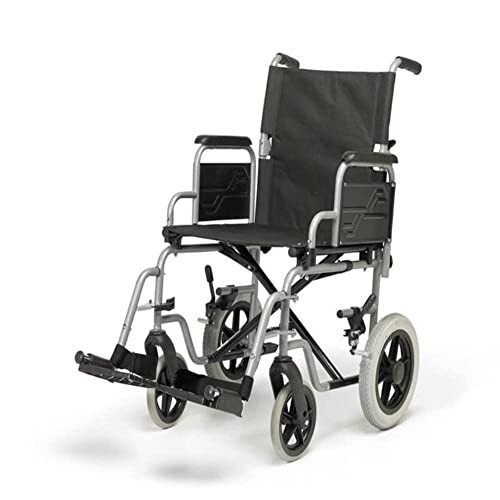
mobility_scooters4761
About mobility_scooters4761
13 Things About Mobility Scooters You May Not Have Considered
Navigating the World of Mobility Scooters: A Comprehensive Guide
In a period where mobility is increasingly acknowledged as an essential aspect of lifestyle, the demand for assistive gadgets has surged. Amongst these, mobility scooters stand apart as a flexible and empowering option for individuals with mobility obstacles. This detailed guide dives into the world of mobility scooters, providing insights into their types, advantages, acquiring considerations, and upkeep tips.

Comprehending Mobility Scooters
Mobility scooters are motorized cars created to help people with mobility issues in walking around more freely and individually. They are especially beneficial for those who find walking tough due to conditions such as arthritis, multiple sclerosis, or post-surgical recovery. Unlike manual wheelchairs, mobility scooters need minimal physical effort, making them an excellent option for extended use.
Kinds Of Mobility Scooters
-
Three-Wheel Scooters
- Pros: More maneuverable, lighter, and simpler to keep.
- Cons: Less stable on rough surface.
- Best For: Indoor and smooth outdoor surfaces.
-
Four-Wheel Scooters
- Pros: More steady, much better on rough surface, and can bring heavier loads.
- Cons: Bulkier and less maneuverable.
- Best For: Outdoor usage, specifically in parks and on uneven surface areas.
-
Portable Scooters
- Pros: Lightweight, collapsible, and simple to transportation.
- Cons: Limited range and speed.
- Best For: Travel and occasional use.
-
Heavy-Duty Scooters
- Pros: Built to manage much heavier users and rugged environments.
- Cons: More costly and less portable.
- Best For: Users over 300 pounds or those who require to navigate rough terrain.
-
Standing Scooters
- Pros: Provide a standing position, which can be beneficial for users who can not sit for extended periods.
- Cons: Limited stability and variety.
- Best For: Users who prefer standing and require short-distance support.
Benefits of Mobility Scooters
-
Improved Independence
- Mobility scooters enable users to travel longer ranges without tiredness, allowing them to participate more totally in day-to-day activities and gatherings.
-
Improved Safety
- With functions like safety belt, anti-tip wheels, and brake systems, mobility scooters provide a much safer alternative to manual wheelchairs and walking help.
-
Convenience and Support
- Adjustable seats, back-rests, and armrests ensure a comfy trip, reducing the pressure on the user’s body.
-
Economical
- While the preliminary financial investment can be significant, mobility scooters are often more cost-efficient in the long run compared to regular taxi rides or specialized transportation services.
-
Social Inclusion
- Mobility scooters facilitate greater social interaction by enabling users to engage in community activities and maintain a more active lifestyle.
Elements to Consider When Buying a Mobility Scooter
-
User Needs and Abilities
- Examine the user’s physical condition, mobility requirements, and day-to-day activities to determine the most ideal type of scooter.
-
Size and Weight Capacity
- Guarantee the scooter can accommodate the user’s size and weight comfortably and securely.
-
Range and Speed
- Think about the normal range and speed required for day-to-day use. Some scooters have a variety of up to 30 miles on a single charge.
-
Portability
- If travel is a priority, decide for a portable scooter that can be quickly taken apart and carried.
-
Upkeep and Support
- Select a respectable manufacturer that offers trustworthy customer support and upkeep assistance.
-
Budget plan
- Set a budget plan and check out choices that offer the very best value for money. Consider financing alternatives and prospective insurance coverage.
Upkeep Tips for Mobility Scooters
-
Regular Cleaning
- Clean the scooter regularly to avoid dirt and debris from affecting its efficiency. Utilize a soft cloth and moderate cleaning agent.
-
Battery Maintenance
- Follow the maker’s standards for battery charging and maintenance. Frequently check the battery level and prevent deep discharges.
-
Tire Inspection
- Check the tires for wear and proper inflation. Change or fix as required to make sure a smooth and safe ride.
-
Lubrication
- Oil moving parts such as the chain and equipments to decrease friction and prevent wear.
-
Expert Servicing
- Set up routine professional servicing to deal with any issues and ensure the scooter remains in ideal condition.
Frequently Asked Questions About Mobility Scooters
-
Are mobility scooters covered by insurance?
- Some insurance plans, including Medicare, may cover the expense of mobility scooters under specific conditions. Consult your company for specific information.
-
Can I use a mobility scooter inside your home?
- Yes, many mobility scooters are designed for both indoor and outdoor use. Ensure the scooter appropriates for the kind of surfaces you will be browsing.
-
How quickly can mobility scooters go?
- The speed varies by design, however many mobility scooters have an optimal speed of 4 to 8 miles per hour.
-
Do I need a license to run a mobility scooter?

- In the majority of countries, a license is not required to run a mobility scooter. However, it is necessary to follow regional policies and traffic laws.
-
Can I travel with a mobility scooter?
- Many mobility scooters are created to be portable and can be disassembled for travel. Contact airline companies and transportation companies for specific requirements.
Mobility scooters are a transformative tool for people with mobility obstacles, providing a mix of independence, safety, and comfort. By comprehending the various types of scooters, considering key getting aspects, and following maintenance best practices, users can take advantage of their Mobility scooter accessories scooter and lead a more active and satisfying life. Whether for daily commutes or leisurely outings, a well-chosen mobility scooter can be a valuable companion on the journey to boosted mobility and lifestyle.
No listing found.

